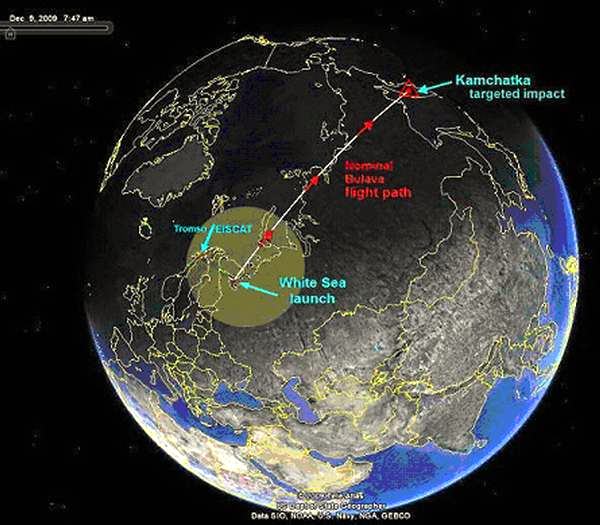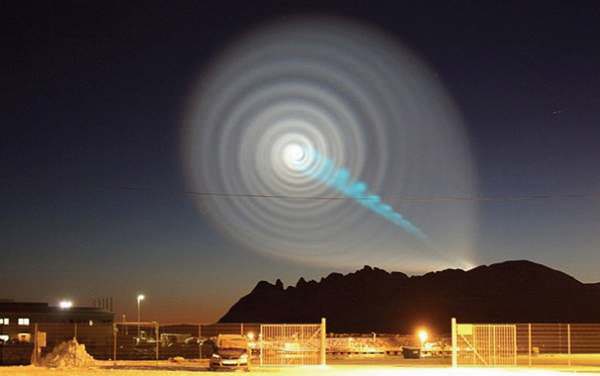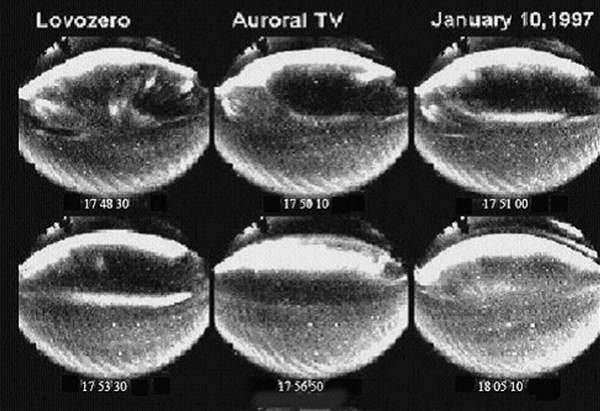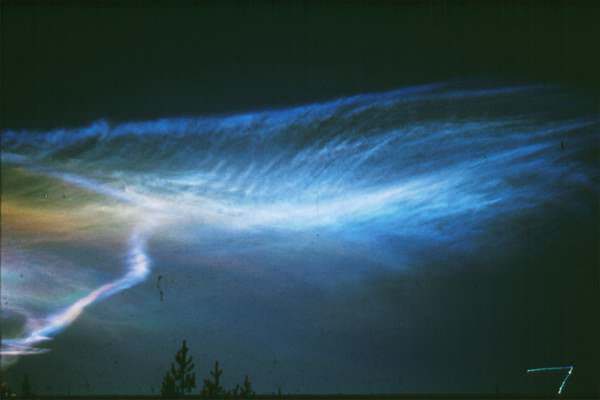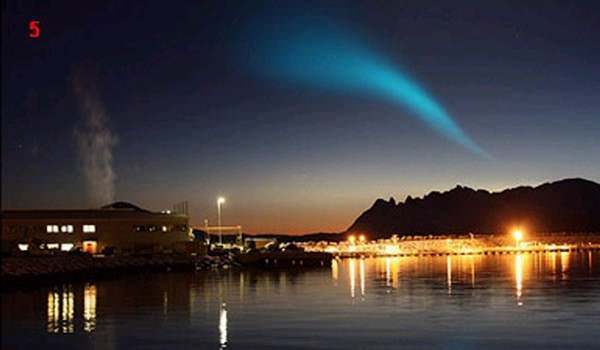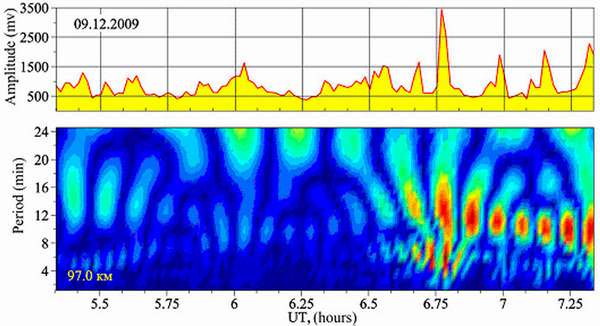| Optical Phenomena due to Rocket Exhaust Products in the Atmosphere |
 |
 |
|
Geophysica(2012), 48(1–2), 65–79 Optical Phenomena due to Rocket Exhaust Products in the Atmosphere
S.A. Chernouss1, Yu.V. Platov2, V.V. Alpatov3 and M.V.Uspensky4 1 - Polar Geophysical Institute of the KSC RAS, 184209, Apatity, Russia Abstract
Optical phenomena caused by a rocket exhaust in the upper atmosphere are presented and discussed. The most intense, large-scale and dynamic phenomena are due to special modes of rocket engines' operation. They are a separation of rocket stages and a shutdown of solid-propellant rocket engines. Optical signatures depend on both technical parameters of rocket engines and physical conditions in the upper atmosphere. The archive and current ground based data collected by amateurs and/or by Northern European observatories can be used as indirect active experiments in upper atmosphere studies.Keywords: rocket exhaust, upper atmosphere, gas-dust cloud, artificial glow, resonance scattering, acoustic-gravity waves 1. IntroductionLaunches of powerful and/or light rockets as well as operating rocket vehicle's engines in the atmosphere are accompanied by an injection of combustion products with its complex composition. These products contain both gas and liquid/solid dispersive components, which develop as the gas-dust cloud(s) with certain geometrical and dynamic features. Such artificial clouds in the upper atmosphere create unusual optical Observations and studies of these atmospheric phenomena allow collecting information on anthropogenic pollution of the near-Earth space and an evolution of the space contamination. The sunlight illuminated space contamination can visualize dynamic processes in the upper atmosphere. A part of such observations were a subproduct of rocket launches from the Plesetsk rocket range and White/Barents sea marine range area (Fig. 1). However, due toscanty broadcasting information the man-made artificial "aurora" appeared often unexpectedly for an observer. It has been an obstacle for special observations, although optical phenomena were always under routine low-resolution monitoring by the auroral all-sky cameras from Northern Scandinavia and the Kola Peninsula during several decades. The optical effects of the rocket engine operating can be seen as tracks left by expanded rocket plumes moving through the sky. The most intense and spectacular bursts of luminosity are due to special modes of the rocket engine's operation, e.g. separations of the rocket stages or shutdown of solid-fuel rocket engines. A number of observations of such effects have been carried out in Northern Russia and they have been published
Fig. 1. A typical suborbital rocket flight trajectory from White Sea to Kamchatka (Tele Atlas,2009). 2. Data and conditionsThe Plesetsk rocket range, which began its operation in 1966, has now performed several thousands rocket launches. One can find many of them in the database of space launches in Russia since 1957, (e.g. Database, 1999-2012). Now the White/Barents Sea includes an area, which is the marine rocket range. For any launch, if a ground observer (or a ground-based instrument) is in a dusk or dawn, and the rocket trajectory is sunlit at a few hundred km altitude, the rocket exhaust product creates conditions for the sunlight scatter and a spectacular sky luminosity performance visible over extensive area. The "Petrozavodsk miracle" mentioned in the next section was seen simultaneously in Arkhangelsk region and Karelia, at the Kola Peninsula and Fennoscandia. Many years routine ground-base all-sky cameras, spectrographs and, later, low-light TV and CCD all-sky cameras were used to collect data for these artificial "auroral" phenomena. A number of interesting pictures (a few shown below) have been collected by amateurs. 3. Two types of optical rocket engine's effects in the atmosphereLiquid propellant rockets: Figure 2 shows the 1-minute sequence of all-sky photos, where time runs from top to bottom,obtained from Archangelsk (64.54 N, 40.54 E), Loparskaya (68.63 N, 33.20 E) and Sodankylä (67.75 N, 27.00 E). This about 5-min event illustrates the fast development of the artificial luminosity cloud, which in 3D configuration is rather similar to a jellyfish. The all-sky camera in the Archangelsk observatory (left hand side column in Fig. 2) captured the luminosity plume in the second frame at 0104 UT(0404 Moscow Standard Time-MSK) over Archangelsk and its fast The Loparskaya all-sky camera (the central column in Fig. 2) resolves a bright burst of glow in the southeastern part of sky at 0405 MSK (0105 UT) and the western cloud edge seen eastward from the local zenith at 0407 MSK. The best images of the luminosity cloud development were observed by the Sodankylä all-sky camera (right hand side column in Fig. 2). Background auroral activity is well seen in the first and second frames, where two auroral arcs aligned from east to west were located near the local zenith. The second frame (similarly to the second frame from Loparskaya) shows a bright spot of glow near the eastern edge of the image. The next frames show development of the event accompanied by rayed structure on outer edges of the expanded luminosity cloud (0408 MSK). Both the background aurora and the exhaust product luminosity evolved independently and were clearly seen by ground based observers, since they took place in the dawn twilight conditions. A peculiar feature of this case was the increased brightness of the dust-gas sunlight scattering, which
Fig. 2. September 20, 1977: Photo series collected by Archangelsk, Loparskaya and Sodankylä all-sky cameras after the Cosmos 955 rocket launch from the Plesetsk rocket range. At 0404-0408 MSK (Mos-cow Standard Time) the exhaust product glow was seen by numerous observers over Petrozavodsk, Karelia and even in Leningrad region. In 1977 it was named in mass media as an unidentified flying object (UFO) "Petrozavodsk Miracle". Solid propellant rockets: As an example, Figure 3 shows a development of the gas-dust glow at the altitude of 100-130 km (Chernouss and Platov,2010). Figure 4 shows a similar gas-dust glow event described by Spell (2010). In latter case, the luminous clouds were formed by the gas-dust product of the "Bulava" missile launched from the White Sea marine rocket range.
Fig. 3. Distorted track of the rocket flight trajectory as a result of a height-wind structure, Apatity, Russia (Chernouss and Platov,2010). As it was shortly mentioned in Section 2, any optical phenomena caused by the rocket exhaust products can be seen by a ground observer in the dusk/dawn twilight. In such a case, the altitude of the Earth's shadow over the observer is not too small, e.g. 80-100 km. After a rocket moves from this shadow to the sunlight, the exhaust products become sunlit. The bright and spectacular luminosity in the Petrozavodsk Miracle case Figure 4 illustrates the possible dynamic and morphological features of the artificial luminosity formations in the upper atmosphere. The Norway Spiral case included two spirals, which are different in scales, colours and the light scattering physics. The first one is blue-green (turquoise) with smaller transverse size. The second spiral is light-grey and larger. More details on the Norway Spiral case can be found in (Spell,
Fig. 4. An amateurs' photo of the exhaust product glows after the Bulava rocket launch at 0645 UT, in December 09, 2009 (Spell, 2010), Skjervoy, Norway). 4. Acoustic-gravity waves after launchIn addition to the optical rocket exhaust effects in the upper atmosphere (Section 3), the rocket launch and the rocket engine operation can create wave-like luminosity structures in the upper atmosphere, which could be observed sometimes by TV instruments (Chernouss et al.,2002). Such wave-glow structures are likely to be a product of acoustic-gravity waves (AGW) caused by a burst-like rocket stage separation. These Horizontal wavelength 35-40 km This AGW event was, supposedly, due to the Plesetsk rocket launch at 1508 UT in January 10, 1997. The pre-launch information was announced by the Information Telegraph Agency of Russia (ITAR-TASS). At the right time, Lovozero TV camera (67.9°N, 34.6°E) observed the rocket trajectory. At 15:13:20-15:13:30 UT the luminosity plume with a sharp light flash was seen at the latitude of about 60°E as a result of the rocket second stage separation (not shown).
Fig. 5. All-sky TV images of the AGW activity observed from Lovozero, the Kola Peninsula. The frame time is running from the left to right and from top to bottom. North is on the top and South is on the bottom of each frame. Visible nightglow wave structures appeared above the Kola Peninsula at around 1730 UT, i.e. two hours after the mentioned stage separation. The waves persisted about 60 minutes during moderate geomagnetic activity and active auroral forms. These nightglow wave structures were easily distinguished from typical auroral structures due to their temporal stability (Fig. 5). The physical features of the observed AGW are open 5. Discussion5.1 Public relationsWe noted already above that the opportunity to see such bright luminosity clouds caused by the exhaust product sunlight scattering can cover huge territories. Their size, singularity and absence of natural analogues have frequently resulted in sensational messages in the mass media about an appearance of an Unidentified Flying Object, UFO (Platov and Rubtsov, 1991,Olmos,1995). For example, so called the "Petrozavodsk Miracle" was under numerous discussions in Russian, European and US mass-media as a real UFO event. In reality it was a results of a not-quite-successful Russian Another sample of mass media reactions on unusual luminosity was due to the "Bulava" rocket launch from the White Sea missile launch corridor in December 9, 2009. This event excited mass media with questions: "What it is: Tesla death ray, energy vortex generated by EISCAT, heating effects of the Sura facility in Russia, an effect of the heater facility in Tromsø, orthe High Frequency Active Auroral Research Program (HAARP) facility in USA or the black hole caused by the CERN collider work?" 5.2 Physical interpretationOptical effects in the upper atmosphere that accompany the launches of liquid and solid propellant missiles are very similar. Both are physically caused by the sunlight scattering associated with a release of combustion products in the upper atmosphere. Chernouss and Platov(2010) and Platov et al. (2010, 2011) distinguished two types of sunlight scattering by the rocket exhaust products: a) the sunlight scattering created by dispersed particles, which are mainly larger in size than the sunlight wavelengths and b) molecular sunlight scattering. For example, dispersed particles create clearly visible light-grey concentric spirals in Figure 4, but molecular scattering forms the internal turquoise spiral cloud along the rocket trajectory. Both the light-grey and the turquoise spiral cloud are a result of a faulty rocket control, which turned out as an uncontrolled rotation of the rocket body along the longitudinal axis. Bright or moderate luminosities are caused by the solar light scattered by dispersed combustion products, and can appear at any heights where rocket engines or chemical vehicle's boosters operate. Majority of known large-scale optical events were observed at heights above 150 km and were due to the special modes of the rocket engine operation. Enhanced luminosities accompany the shutdown of solid fuel rocket engines when they have brought a payload at a needed trajectory. The sharp dump of pressure in a combustion chamber creates an instant injection of various fuel components and combustion products into the atmosphere. The amount of matter injected by a powerful rocket may reach hundreds of kilograms.The majority of the exhaust products can be in a disperse form due to the incomplete process of combustion. Such artificial Large-scale cloud-like luminosity configurations in the middle and upper atmosphere created by the rocket engine exhaust can be described by two basic types. The first type covers effects in the stratosphere and low ionosphere at heights around 40-80 km (e.g. Romanovsky et al.,2000). The enhanced luminosities are due to the remaining fuel after the separation of the most powerful first stage of a launcher and the first stage The second type of the luminosity cloud development is more complicated. It can happen during the rocket second stage separation when combustion products appear at higher altitudes (above 100 km). It depends on the physical conditions in the atmosphere but also on the amount of exhaust products injected. Physically the luminosity is the sunlight scatter on combustion products inside a quickly expanding cloud. The primary speed of the solid product expansion is about 1-3 km/s and the dispersed products expand nearly freely at the altitudes higher than about 120 km. The brightness of the sunlight scattering dust cloud is not so significant in comparison with the brightness of the molecular resonant sunlight scattering. In the latter process, the long-lived scatter spreads slowly as a result of diffusion processes in the upper atmosphere. The molecular resonant sunlight scattering is usually caused by the solid propellant engines. Typically the resonant scattering appears after the final dynamic phase of the luminosity cloud development (Platov et al.,2004; Chernouss et al., 2005; Chernouss and Platov, 2010, Platov et al., 2011). A weak resonant luminosity can be seen for several hours in the area of the rocket's stage shutdown. The effect of the ratio between gaseous and dispersed fuel components in the rocket exhaust is a subject for further studies. The molecular type of the sunlight scattering caused by the solid rocket propellant appears exclusively in the exhausted product interaction with the upper atmosphere. Figures 6 and 7 show events of the molecular resonant sunlight scattering, which has a distinctive turquoise colour. The aluminium monoxide molecules (AlO) in the wake of the rocket trajectory create this resonant scattering (Platov et al., 2004; Chernouss et al., 2005;Chernouss and Platov, 2010; Platov et al., 2011). AGWs, seen as spatial variations of the nightglow intensity (Section 4), can be revealed also by the partial reflection method used for studying the ionospheric D region (Gardner and Pawsey, 1953). Tereshchenko et al.(2010) found such an opportunity for the Norway Spiral case. The authors studied the interaction of the polar D-region ionosphere with disturbances created by the rocket passage through the ionosphere. They
Fig. 6. c. The frame time is running from the left to right and from top to bottom. North is on the top and South is on the bottom of each frame.
Fig. 7. All-sky TV images of the AGW activity observed from Lovozero, the Kola Peninsula. The frame time is running from the left to right and from top to bottom. North is on the top and South is on the bottom of each frame. A comparison of the optical and partial reflection data in Figure 8 shows their similarity, e.g. In the wave structure and duration, but also a discrepancy, e.g. In the wave period and a delay of the wave appearance after the launch. The discrepancies can be due to observations at different altitudes.
5.3 Possibility to use the rocket launch data as indirect active experiments in the atmosphereAll direct active experiments with artificial injections of matter in the atmosphere and subsequent studies of the luminous cloud evolution, as a method, are very similar to studies of the luminous cloud evolution created by combusted product of any rocket launch. An example of such a similarity has been discussed in the paper by Romanovsky et al.(2000). For studies of the upper atmosphere by the exhaust product sunlight scattering it is possible to use existing optical (and other) data of rocket-related phenomena collected in Finland, Sweden and Norway during the past few decades. This topic is open for future studies. a) Temperature measurements in the upper atmosphere Green-blue clouds observed during rocket launches, such as the one in Figures 4 and 7 (see also Platov et al.,2011), and blue-green clouds after the artificial trimethyl aluminium release are both products of the aluminium oxide(AlO) molecular sunlight scattering. In the latter experiment, a geophysical rocket delivered an explosive payload canister at a fixed altitude (Rosenberg and Colomb,1964; Andreeva et al., 1991). The atmospheric temperature can be derived from the observed spectrum of the luminous cloud (Harang, 1964). In case of a solid propellant rocket, the temperature estimates can be done in the form of height-time profile along rocket trajectory, where AlO is situated. b) Chemical reactions of exhaust products with components of upper atmosphere Launches of rockets from Russian rocket ranges and launches in numerous geophysical experiments in USA, Europe and Russia are accompanied by injections of different chemical components, such as NH4Cl04, NOClO4, Al, Mg, Be, LiH, LiClO4 and (AlH3)3 into the upper atmosphere (Feodosiev, 1981; Uppsala report, 1971; Andreeva et al., 1991; Avdyushin et al., 1993). The intensity of the spectral lines could be used to estimate of the component evaporation rate. Comparison of spectra for chemical release of known components with the spectra of rocket exhaust products gives a possibility to estimate the rates of reactions in the atmosphere. The cross sections of the UV excited exhaust product chemistry can be used to estimate the mass of such exhausted chemical components. c) Dynamics of luminous formations in the upper atmosphere The velocity of the neutral wind can be estimated by following spatial dynamics of the luminous clouds. The cloud's configuration observed from several locations allows reconstruction of the spatial structure of the neutral winds. In the case of an artificial burst-like injection, the cloud structure dynamics can be seen around a fixed altitude (Andreeva et al., 1991).The diffusion and sublimation estimates in the combusted product cloud are possible along the rocket trajectory(Platov et al., 2004a). These ideas for studying the atmospheric winds at 80-110 km altitude were supported by the recent 5-rocket NASA ATREX experiment realized in March 27, 2012 (https://www.nasa.gov/mission_pages/sunearth/missions/atrex.html). d) Acoustic-gravity waves (AGW) The upper atmosphere AGW activity after rocket launches can be efficiently studied by both optical methods and by the method of partial reflection (Chernouss et al., 2002, Tereschenko et al., 2010). e) Complex study of exhaust product effects Optical observations of the sunlight scatter by the rocket combusted products and observations of related radiophysical effects are efficient means to study physics of the upper atmosphere (Alebastrov et al., 1993; Avdyushin et al., 1993). A lot of archived radiophysical, optical and other data are available for specialanalysis in a number of Northern European observatories (e.g. Loparskaya, Lovozero, Archangelsk, Heiss Island in Russia; Sodankylä, Kevo, Kilpisjärvi in Finland; Andøya, Tromsø, Longyear-buen in Norway and Kiruna in Sweden). 6. SummaryFeatures of the artificial luminous clouds(e.g. luminosity scales, geometry, colours, dynamic processes and waves) in the upper atmosphere as a result of the sunlight scattering by rocket exhaust products have been concisely described. These features are based on numerous operations of different rockets in the upper atmosphere and ob-served during a few tens of years in Russia, Finland, Norway and Sweden. Dynamics of luminous clouds connected with the exhaust product interaction with components of the upper atmosphere can be efficiently used as a method of active experiments in near-Earth space. These studies are relatively cheap, since they do not include the huge expenditures related with a rocket launch. Authors thanks RFBR foundation for the grant No 10-05-00792а.ReferencesAlebastrov, V.A. and N.F. Blagoveschenskaya, 1993. Studies of artificial clouds in the ionosphere by radio physics methods. Cosmic Research,Vol. 31, No 1, pp. 41-53 (in Russian).
Set as favorite
Bookmark
Email This
Hits: 13242 |
 Optical Phenomena due to Rocket Exhaust Products in the Atmosphere
Optical Phenomena due to Rocket Exhaust Products in the Atmosphere